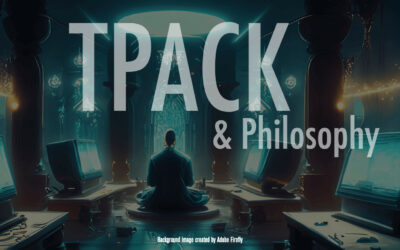Matt Koehler and I just submitted an article for Learning & Leading with Technology, the flagship journal published by ISTE. The journal features practical ideas for using today’s technology tools to improve teaching and learning. Our work on TPACK was recently featured in an article there (here’s a link). Our current article, our first for the magazine is titled Creative uses of cool tools for teaching, Considering the TPACK framework. Since this is in draft form right now, I am not posting a link here. However, here are some key excerpts, just to whet your appetite!
This is the age of cool tools. Facebook, the iPhone, Flickr, blogs, cloud computing, Smart Boards, YouTube, Google Earth, and GPS devices are just some of the most recent examples. New technologies bombard us from all directions. Often our reaction when we see a new toy is one of surprise and pleasure. These toys are cool.
As individuals we see a new technology and can appreciate its coolness, but as educators we also wonder how these tools can be used for teaching. We understand that just because a technology is innovative and cool does not necessarily make it an educational technology. We hear common refrains – “technology should not drive pedagogy” or “technology is just a tool, a means to an end, not the end itself.” We also can, however, sense that these emerging technologies have the potential to fundamentally change we think about teaching and learning and our role as educators. We wonder just how these cool tools, if used thoughtfully and creatively, can positively influence pedagogy.
…
Repurposing these cool tools for educational purposes, however, is not a trivial problem. In this article (and elsewhere) we have argued that for educators to repurpose tools and integrate them into their teaching, they require the creative application of a specific kind of knowledge that we call Technological Pedagogical Content Knowledge (or TPACK for short). In this article we introduce the TPACK framework and describe just how it can help teachers become more creative and intelligent in their use of technology.



Hello Punya sir,
I am Anamika Teotia, a phd student
Working on modeling creativity in preservice teachers Tpack for English language.
However need your suggestion whether I should choose social collaborative creativity or individual aspect of creativity.
Regards